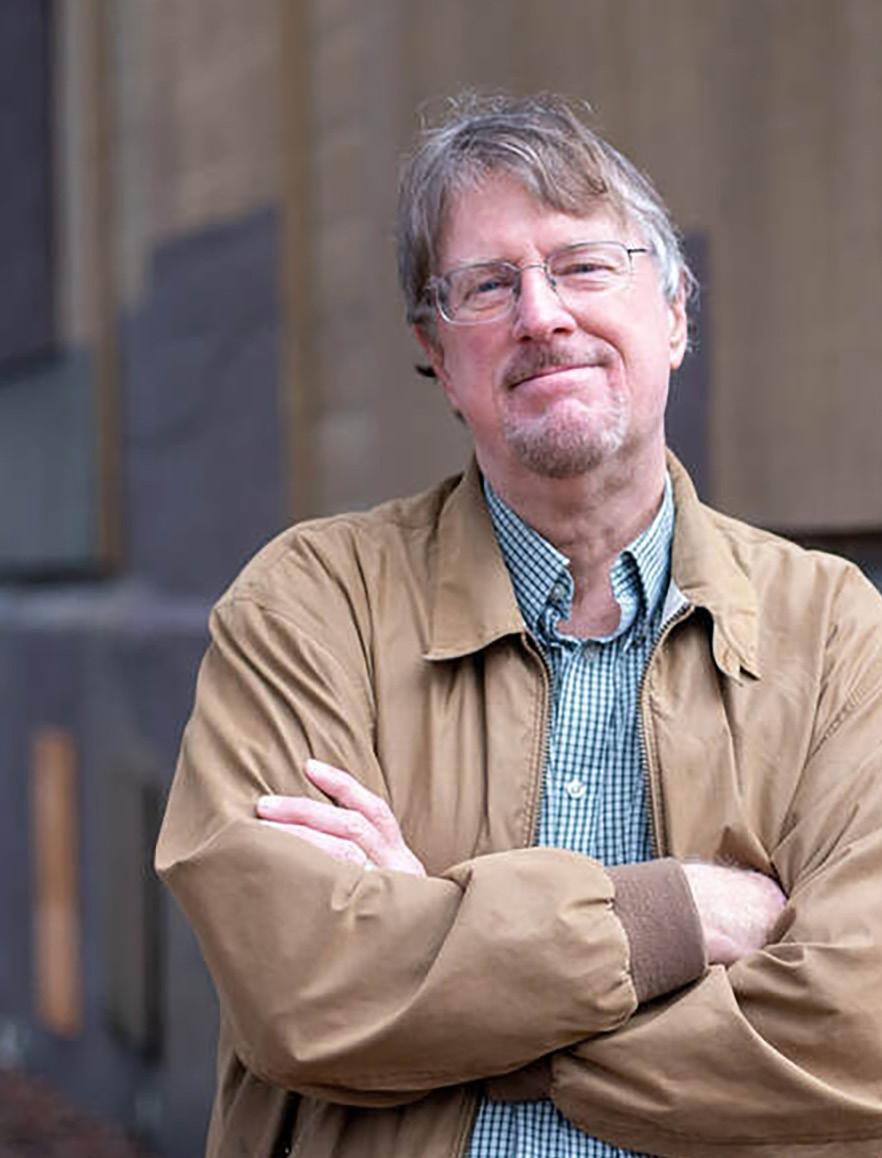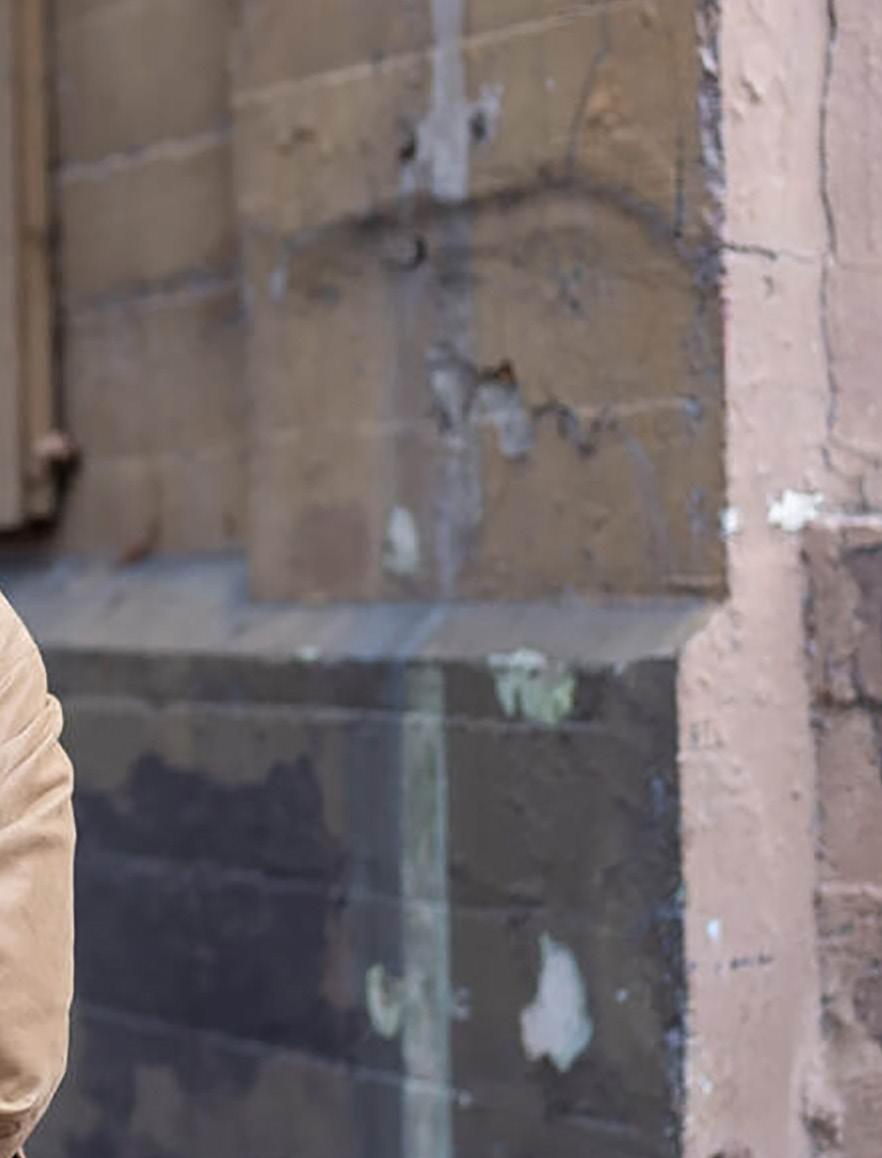
5 minute read
FastForward interviews Bay Area reporter Kevin Fagan
SHINING A LIGHT
Longtime Bay Area reporter has seen a lot on his beats. But he’s still all in on journalism and a bit of a boy scout at heart
Advertisement
BY CHLOE CRAFT and GILLIAN REYNOLDS JUNIORS, REDWOOD HIGH SCHOOL
Kevin Fagan has been one of the good guys for four decades, working his way up from small newspapers to the Oakland Tribune and then the San Francisco Chronicle, where he’s been a prize-winning reporter since 1992. His journalistic career really began, though, at Livermore High School’s student newspaper, The Torch (“the most amazing thing I’d ever experienced”), so it’s only fitting that Fagan met with FastForward recently to discuss his career and the craft of reporting.
He worked his way up from small newspapers to the Oakland Tribune and later the San Francisco Chronicle, where he’s been a prize-winning reporter since 1992. His journalistic career really began, though, at Livermore High School’s student newspaper, The Torch (“the most amazing thing I’d ever experienced”), so it’s fitting that Fagan met with Fast Forward recently via zoom to discuss his career and the craft of reporting.
After earning his journalism degree from San Jose State, “I did the usual thing with a backpack and a guitar and went to Europe and worked at the BBC doing radio news in London, went over to Ireland, covered some of the troubles over there, and came back here.” At the Chronicle “I started out as a crime reporter, then I was a feature reporter, a homeless reporter, a disaster reporter, and then I covered City Hall politics. I just tried to do a little of everything.”
Although natural disasters and serial killers have been among Fagan’s specialties — he’s covered the Zodiac Killer for 25 years, and his eight-part podcast on the Doodler has garnered wide attention here and abroad — “homelessness is the thing that really captures my heart.”
From 2003 to 2006, he became the only beat reporter in the United States covering homelessness full time. “I spent six months sleeping on the streets of San Francisco with a photographer named Brant Ward. We didn’t want to just do stories about sad homeless people, we wanted to try to figure out what worked. And at the end of it, we did a five-day series that showed the depth of the problem, how we got there, and how to fix it, as far as we could tell.” Fagan spent the next four years traveling the country, covering the story on a national scale, and for the past five years he’s headed up the Chronicle’s big picture “San Francisco Homeless Project.”
Working on such an involved and personal story gave Fagan insight into the concept of journalistic detachment from his subject. “You’re a human being. You can allow yourself to show some empathy, to feel empathy. And homeless people can tell if you’re being sincere or not. If you don’t care about the people you’re writing about, you don’t have much business writing about them. You want someone to be honest with you — and revealing — and to trust you to take the part of their life that they’re giving to you, and trust that you will handle it responsibly, and be sensitive, and be honest.” But “keep a boundary. Because if you get too close, you get sucked into their world, and you don’t want to be in their world. You want to be reporting on their world.”
Several homeless programs have been created based on Fagan’s reportage. “Homeward Bound, the program that sends people home on buses because they want to reunite with family and friends, was based on a story I wrote years ago. There’s also more street outreach, and supportive housing has been increased.” But homelessness is a complicated problem “that’s about a lot more than people sitting around in tents. It goes deeply into poverty, minimum wage, the way we create a split between rich and poor in this country.”
One changing factor in modern journalism is art and photography. “When I started out in the Pleistocene era, shooting your own photos was an indicator that you were on a penny press paper that couldn’t afford photographers. Now it’s what everyone does. It’s better to have a professional photographer, but sometimes all you’re going to get are the photos that some schlub like me shoots. So, shoot a lot.”
The pandemic has been another gamechanger. “For a while I couldn’t even go out. Doing everything by phone is not good. We were using stock photos for some of the stories. But Covid will go away at some point, and we’ll all be able to get back to doing real things again, like more photos and videos. I’m a word guy, I really don’t like shooting photos and videos, but I have to for my work, because that’s the modern era.”
In a career of covering everything from 9/11 and the Columbine massacre to the Ghost Ship and Wine Country fires, Fagan hasn’t lost his lifelong love for the newspaper business. “The thing that’s really made me unhappy in recent years is this trope about us being fake news. I was a Boy Scout when I was a kid, and I consider journalism to be a bit of an extension of that. You tell the truth. And you try to shine a light on things that need lights shone on them.”



